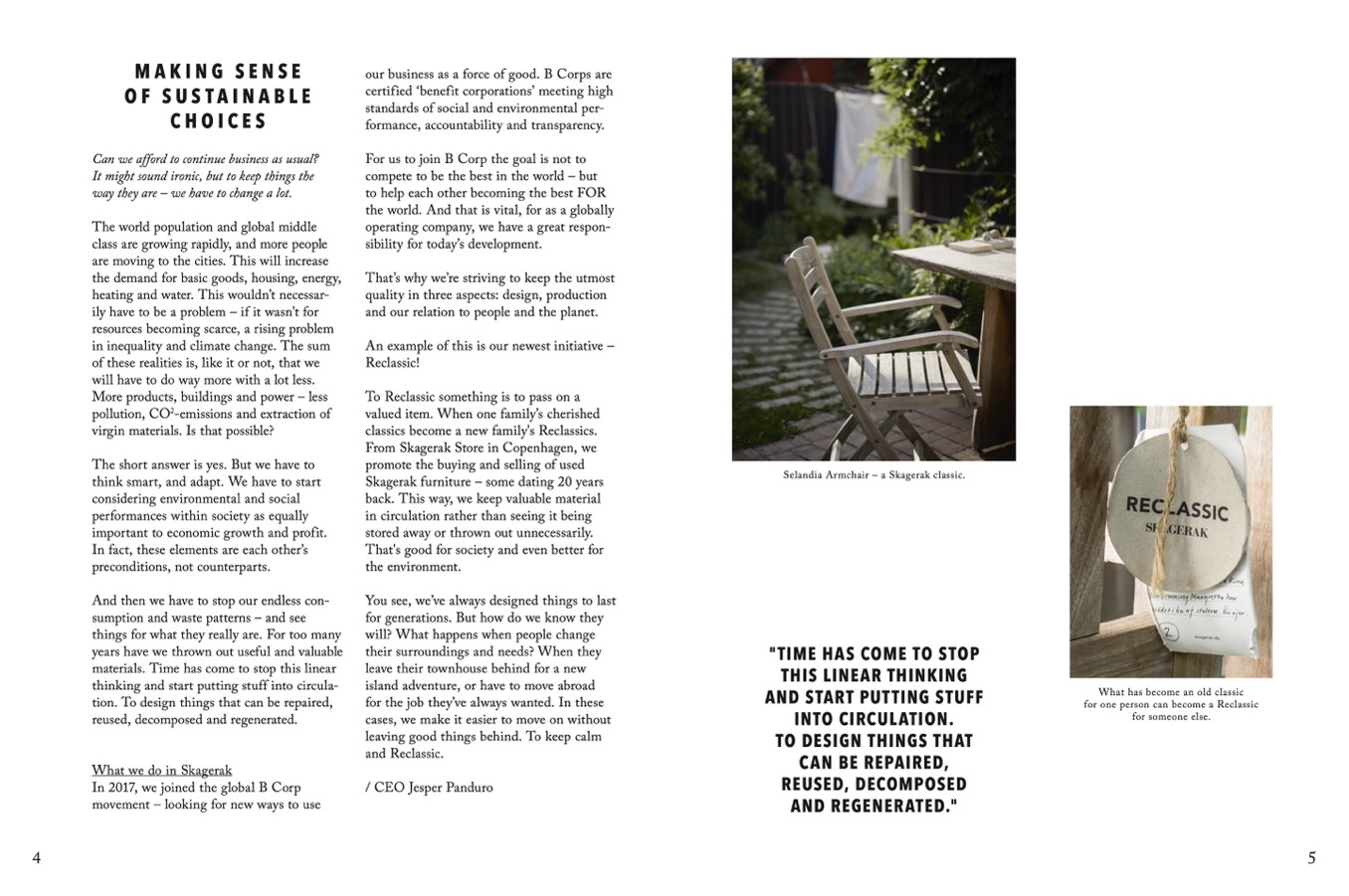
MAKING SENSE
OF SUSTAINABLE
C H O I C E S
Can we afford to continue business as usual?
It might sound ironic, but to keep things the
way they are – we have to change a lot.
The world population and global middle
class are growing rapidly, and more people
are moving to the cities. This will increase
the demand for basic goods, housing, energy,
heating and water. This wouldn’t necessar-
ily have to be a problem – if it wasn’t for
resources becoming scarce, a rising problem
in inequality and climate change. The sum
of these realities is, like it or not, that we
will have to do way more with a lot less.
More products, buildings and power – less
pollution, CO
2
-emissions and extraction of
virgin materials. Is that possible?
The short answer is yes. But we have to
think smart, and adapt. We have to start
considering environmental and social
performances within society as equally
important to economic growth and profit.
In fact, these elements are each other’s
preconditions, not counterparts.
And then we have to stop our endless con-
sumption and waste patterns – and see
things for what they really are. For too many
years have we thrown out useful and valuable
materials. Time has come to stop this linear
thinking and start putting stuff into circula-
tion. To design things that can be repaired,
reused, decomposed and regenerated.
What we do in Skagerak
In 2017, we joined the global B Corp
movement – looking for new ways to use
our business as a force of good. B Corps are
certified ‘benefit corporations’ meeting high
standards of social and environmental per-
formance, accountability and transparency.
For us to join B Corp the goal is not to
compete to be the best in the world – but
to help each other becoming the best FOR
the world. And that is vital, for as a globally
operating company, we have a great respon-
sibility for today’s development.
That’s why we’re striving to keep the utmost
quality in three aspects: design, production
and our relation to people and the planet.
An example of this is our newest initiative –
Reclassic!
To Reclassic something is to pass on a
valued item. When one family’s cherished
classics become a new family's Reclassics.
From Skagerak Store in Copenhagen, we
promote the buying and selling of used
Skagerak furniture – some dating 20 years
back. This way, we keep valuable material
in circulation rather than seeing it being
stored away or thrown out unnecessarily.
That's good for society and even better for
the environment.
You see, we’ve always designed things to last
for generations. But how do we know they
will? What happens when people change
their surroundings and needs? When they
leave their townhouse behind for a new
island adventure, or have to move abroad
for the job they’ve always wanted. In these
cases, we make it easier to move on without
leaving good things behind. To keep calm
and Reclassic.
/ CEO Jesper Panduro
Selandia Armchair – a Skagerak classic.
"TIME HAS COME TO STOP
THIS LINEAR THINKING
AND START PUTTING STUFF
INTO CIRCULATION.
TO DESIGN THINGS THAT
CAN BE REPAIRED,
REUSED, DECOMPOSED
AND REGENERATED."
What has become an old classic
for one person can become a Reclassic
for someone else.
4
5

